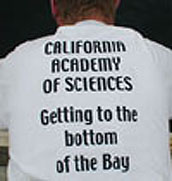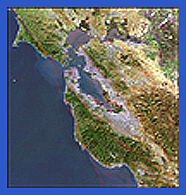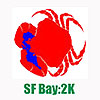PROJECT
OVERVIEW
|
The
California Academy of Sciences has
launched a major biological survey of the bottom-dwelling animals in
San Francisco Bay to document biological
changes to this important natural resource and aid in its conservation. Specimens will be collected and compared to
earlier samples to provide a biological baseline and database which will inform
planning decisions on major applied projects in the Bay. The survey will result
in nothing less than a complete list of all bottom-dwelling animals in the
Bay. A body of current and historical data from which environmental mitigation
parameters could be developed forms the core of SFBay:2K.
Generations of scientists and environmentalists have been concerned with the degradation of San Francisco Bay. As far back as 1856, scientists have investigated the physical, chemical and biological parameters of the Bay. One of the chronic problems in the Bay has been the introduction of exotic species. These organisms have eclipsed native biodiversity at an alarming rate. Of the approximately 700 species currently recorded in the Academy's databases, more than 200 exotic species have been found in the Bay in recent years.
There
is a strong educational
component to this biological monitoring
initiative. The SFBay:2K project introduces Bay Area teachers to the process
of scientific discovery, involving them directly in specimen collection, identification,
and data analysis. The
educational component of the SFBay:2K is a critical,
mission-based aspect of the Academy’s outreach to the public.
It is also a model for the working integration of the Academy's twin
missions of research and education. As the Academy moves closer to restoration
and remodeling, the SFBay:2K educational programs will provide highly visible
and important outreach activities for the San Francisco Bay Area community.
These outreach activities will continue throughout the Academy’s transitional
period and beyond.
 |
 |
INVERTEBRATE ZOOLOGY & GEOLOGY| ICHTHYOLOGY|EDUCATION | RESEARCH
CAS BIODIVERSITY CENTER | CAS HOME | SEARCH
 SAN
FRANCISCO BAY: 2K
SAN
FRANCISCO BAY: 2K